
What do you say when someone asks, “How was your childhood? Your teenage years?” What would you say? Typically, childhood memories are filled with playgrounds-the smell of mulch swirling around running children, mixing with the stench of pre-deodorant must. Teenage years filled with teenage angst, school dances, classes, and graduation. For many, being a minor is invigorating, a faint happy memory. For others within the Atlanta Area, an opposite universe. Atlanta creates a gilded exterior: Ponce City Market, The Beltline, and the Georgia Aquarium, helping city dwellers to overlook underlying issues such as sex trafficking.
It is a pervasive issue throughout the city of Atlanta and Georgia, affecting as many as 400 adolescent females a month (“Men Who Buy Sex” 11). In 2005, the FBI determined Atlanta to be one of fourteen cities considered major sex trafficking hubs within the U.S. (Swecker 2). Though more awareness on sex trafficking has come about over recent years, the issue is continuously overlooked by the news, residents, and city officials. There is a lack of support and resources for victims in Atlanta from the government despite the fact that it is the 2nd most lucrative crime industry in the U.S. (Wright et al. 2).
Atlanta is a very convenient spot for traffickers due to Hartsfield International Airport, the multiple interstates, large conferences, and the adult entertainment venues allowing for easier entering and exiting (Tripp and McMahon 10). Traffickers will target vulnerable groups of minors, specifically runaways, homeless youth, and those in foster care or child protective services (Kotrla 3). The average age individuals are trafficked is between 11-14 years old. At that age, many kids are going to middle school but for these children, they are being used for the sexual pleasure of others. Some children are as young as 5 years old when initially sold. These children are forced to do a variety of sexual acts against their will not limited to prostitution, pornography, stripping, and escort services (Kotrla 2).
Over the years, the minors are forced to commit sexual acts and then transition into adult prostitution (Kotrla 1). This image is representative of the thought process of the children as they age. The only life they come to know is a life of forced prostitution. This is a main issue within sex trafficking because sometimes victims become comfortable within this cycle of manipulation and do not leave. Even as adults, the traffickers will typically control who the women meet and will take the money for themselves. The traffickers will spend years breaking down the minors until they have no strength to fight, tricking them into believing that this is the only way for them to survive. Like The Scream (1893), the victim’s emotions are suppressed. They are the only ones who understand the pain and manipulation. The world continues around them without others noticing. The beauty of the outside world is distorted in the eyes of these children because of the horrors they have experienced. In the minds of the victims, it becomes their life: a life of pleasing others without consent.
Contrary to popular belief, many of the minors are not kidnapped from random places. The traffickers will groom the potential victims through love relationships–spoiling them with money, gifts, fake acts of romance to build trust with the children. For example, one major case, U.S. v. Pipkins et al (2001), had over 50 underage victims within a span of only 4 years. The traffickers used false promises of love, employment, and fame to lure the victims in (Tripp and McMahon 20). In other cases, loved one and family members will sell or traffic their children. Other traffickers will trick immigrant woman into thinking they are providing freedom in the U.S. This scenario happens most often with Hispanic victims due to the proximity of the United States to Mexico and other countries in South America.
Though many are found within Atlanta, most of the buyers live in the suburbs outside Atlanta (Fulton, DeKalb, Clayton, Cobb, and Gwinnett counties) (Wright et al. 6). Most of the people buying these services could be living in proximity to many Georgia residents without anyone realizing. Each month, 12,400 men in Georgia pay for sex with a young woman and 7,200 of them end up exploiting an adolescent female (“Georgia Human Trafficking” 2). Social media and online websites such as Craigslist play an integral role in the selling of children for sexual services (Kotrla 3).
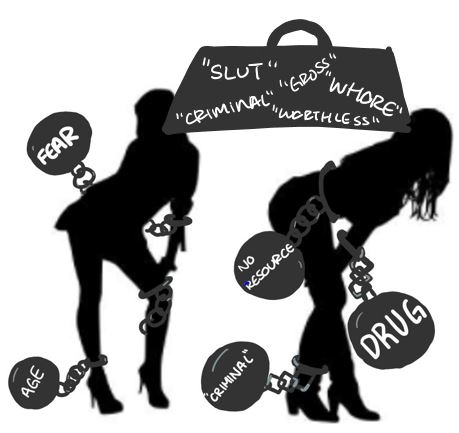
The individuals subjected to sex trafficking are often seen as criminals/delinquents as they age (Kotrla 2). These people are victims to a physically, mentally, and psychologically abusive industry that breaks them down. Treatment should be focused on recovery and reversal of the years of manipulation. Another misconception is that a certain look is sought after. Traffickers will target all races: Asian, Black, White, Hispanic, etc. All that matters is if the potential individual can be controlled by any means necessary. Gender is not a limiting factor either. Males and females are trafficked although females are trafficked more often. Minors who identify as LGBTQ+ are considered a group vulnerable to sex trafficking as well, due to the increased risk of being kicked out of their homes by parents. As represented by the image, the victims want to escape but many factors hold them down: fear of being trafficked again, societal misconceptions, and drug addiction among other things.
In the past few decades, more legislation has been created to limit sex trafficking and protect victims especially in Georgia. Nationally, the main law is The Victims of Trafficking and Violence Protection Act (VTVPA) passed in 2000. It provides an official definition of sex trafficking as “a commercial sex act [induced] by force, fraud, or coercion, or in which the person induced to perform such an act has not attained 18 years of age.” (Kotrla 1). This was extremely important because there was ambiguity between states and nations regarding how to differentiate human trafficking between sex and labor trafficking. In Georgia, legislation has improved by providing harsher punishments for traffickers and better protecting victims.
In 2011, HB 200 was passed which increased the minimum punishment from one year to 10 years (“Human Trafficking” 1). Sex trafficking of minors now ranges in prison time from 25 years to life in prison. The maximum sentence used to be merely 20 years. It also broadened the definition of coercion to encompass more tactics used. Victims of trafficking are now eligible for victim compensation for the serious mental and emotional trauma they have experienced.
On June 29, 2020, Governor Brian Kemp signed SB 435 also known as The Survivors First Act. This created remedies for individuals to clean their Georgia criminal history if they are survivors of sex trafficking (“Human Trafficking” 2). The act was a huge step towards seeing the affected as victims, not criminals. It specifically vacated convictions that were direct results of the trafficking. By doing so, this increases access to employment, housing, and other opportunities for victims of sex trafficking. Before this, many victims would be arrested when asking police for help due to drug addiction.
I got upset when I realized what he was doing, but I kept doing it because he made me feel like I was special -Sacharay
Atlanta is a known sex trafficking hub and yet there is a lack of resources available to support victims who want to escape. In the last two years, more support has been provided to Georgia by the federal government. The U.S. Department of Justice allocated nearly $4.3 million to help prosecute traffickers and aid victims (“Department of Justice” 1). Though the funds are there, they are typically not allocated effectively due to a lack of pressure on legislators and officials.
State government and city officials should allocate aid for victims based on what they need to succeed outside trafficking. Many times, victims need safe housing away from traffickers, specialized mental health services, and medical care and substance abuse treatment (Swecker 2). New Social Security numbers are recommended by the FBI as well since traffickHers often keep birth certificates, drivers’ licenses, and other documents to track victims who flee (Swecker 2). Housing for young children coming out of trafficking is few and many are sent to juvenile detention centers or foster homes which makes them susceptible to being trafficked again.
Housing options for victims have increased since the early 2000s but are still small in numbers. Wellspring Living is a non-profit organization founded in 2001. They focus on domestic sex trafficking victims (DMST) and provide specialized recovery services for these cases in Atlanta. For minors 12-17 years old, Wellspring’s Girl’s Residential Program provides safe housing for up to 13 months (“About Us” 1). Another organization, Tabitha’s House focuses on awareness and mental health resources. They are currently planning a residential facility within metro Atlanta (“Our Story” 1).
These victims and survivors are some of the strongest people within Atlanta. They are the epitome of The Two Fridas (1939). In one area, they are destroyed, heartbroken, and beaten down, unable to escape. On the flipside, many can succeed with the proper guidance becoming independent, accomplished members of society. Individuals suffering from sex trafficking are not lost causes. All they need is a helping hand—a hand that is judgement-free, caring, and available to them. Like the Black Iris (1926), the victims are covered by years of abuse (the petals) which covers who they were before all the trauma of forced sex. Sex trafficking happens all around Atlanta every day, unbeknownst to people walking around the city. Though right under our noses, sex trafficking continues to be a major issue.
Now what can you do to help? One way is to research local Atlanta organizations working towards aiding victims trying to escape. Donating to these organizations help immensely with funding the mental health resources and housing facilities. Another way is to hold officials accountable about how they are addressing sex trafficking within Atlanta. This can be done by emailing/contacting federal and state officials. If you believe someone may be a victim, call the 24-hour National Human Trafficking Hotline (1-888-373-7888) or 911.
Resources Used:
“About Us.” Wellspring Living. Wellspring Living, 2020. Web. 28 Feb. 2021.\
“Department of Justice Awards Nearly $153 Million to Reduce Crime and Improve Public Safety in Georgia.” The United States Department of Justice. 12 Nov. 2019. Web. 28 Feb. 2021.
“Human Trafficking.” Office of Attorney General of Georgia Chris Carr. Georgia.gov. Web. 28 Feb. 2021.
“Our Story: Who We Are.” Tabitha’s House. Tabitha’s House, 2017. Web. 28 Feb. 2021. <https://tabithashouseint.org/our-story/>.
Georgia Human Trafficking Fact Sheet. Center for Public Policy Studies, June 2013. PDF.
Kotrla, Kimberly. “Domestic Minor Sex Trafficking in the United States.” Social Work, vol. 55, no. 2, 2010, pp. 181–187. JSTOR, www.jstor.org/stable/23719974. Accessed 22 Feb. 2021.
Men Who Buy Sex with Adolescent Girls: A Scientific Research Study. The Shapiro Group, 2010. Web. 27 Feb. 2021. <https://multco.us/file/24357/download>.
Swecker, Chris. “Exploiting Americans on American Soil: Domestic Trafficking Exposed.” FBI. FBI, 07 June 2005. Web. 28 Feb. 2021.
Tripp, T.M., McMahon-Howard, J. Perception vs. Reality: The Relationship Between Organized Crime and Human Trafficking in Metropolitan Atlanta. Am J Crim Just 41, 732–764 (2016). https://doi.org/10.1007/s12103-015-9315-5
Wright, Eric R., Ana LaBoy, Kara Tsukerman, Nicholas Forge, Erin Ruel, Renee Shelby, Madison Higbee, Zoe Webb, Melanie Turner-Harper, Asantewaa Darkwa. 2021. The Prevalence and Correlates of Labor and Sex Trafficking in a Community Sample of Youth Experiencing Homelessness in Metro-Atlanta. Social Sciences 10: 32. https://doi.org/10.3390/socsci 10020032

2021 Ashley Jhun Inc.
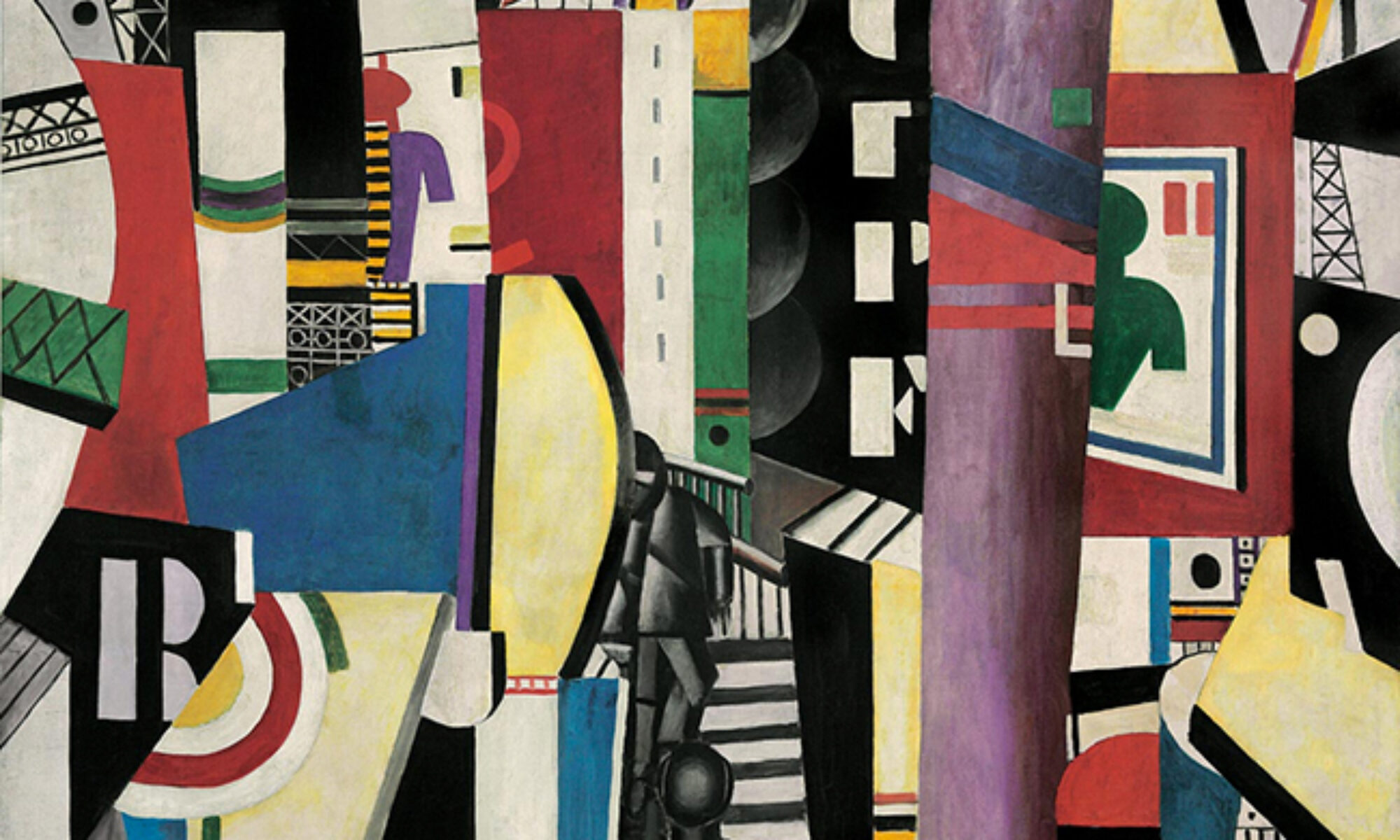
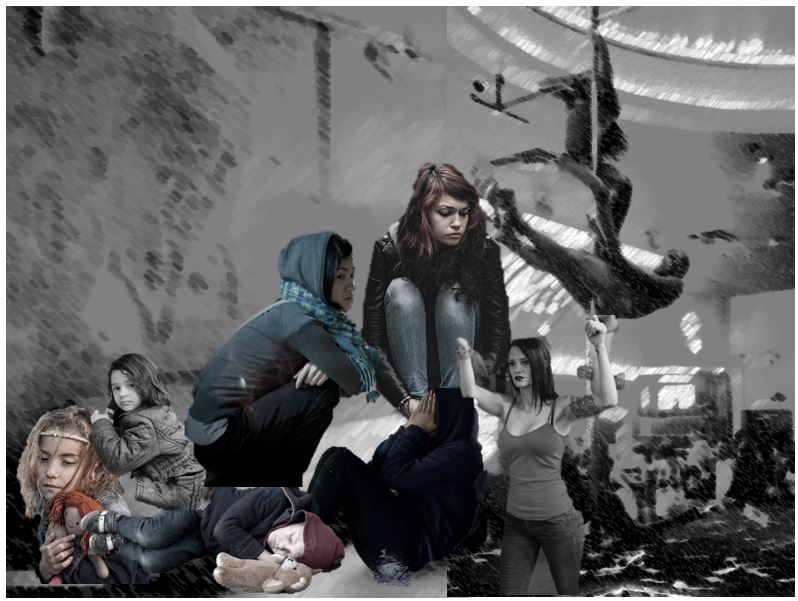
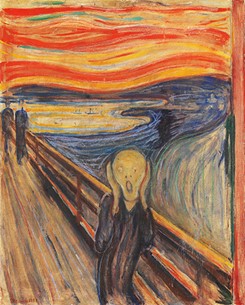

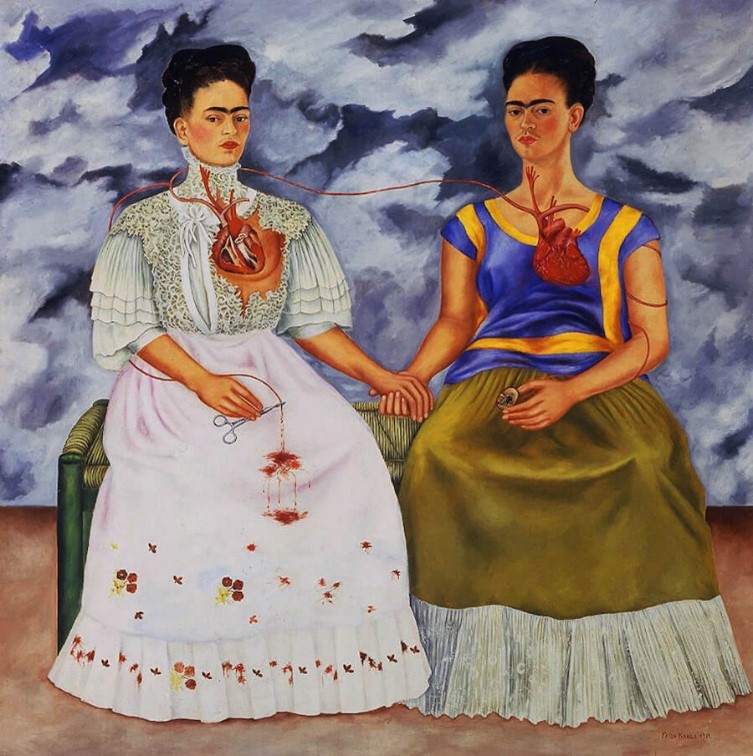
Wow. Reading this really shed a lot of light on the trafficking problem in Atlanta. I was aware, but I had not known the extent of it and the statistics behind it until reading this. Your message is clearly conveyed in through your images, especially your original ones that you created. I also really appreciate the way you spoke about victimhood and seeing the children as victims instead of delinquents. My favorite part of this, i think, was your use of the Frida Kahlo painting. It is one of my favorites and really portrays your idea of broke youth in need of our help and awareness. Great work on this post, it shed a lot of light on the trafficking problem in Atlanta.